Did you know that New Zealanders' gambling, drinking and even cinema-going habits were targeted by religious organisations in an effort to win the war?
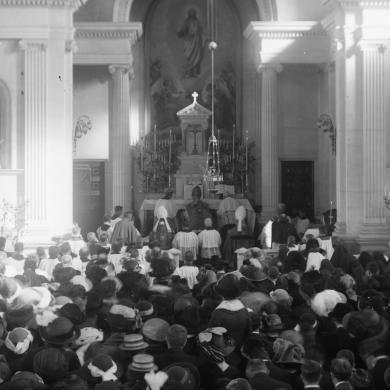
A 1913 consecration mass at the Sacred Heart Catholic Cathedral, Wellington. Image courtesy of Auckland Libraries: 1032-9672
In 1914 the three main Christian churches – Anglican, Presbyterian and Roman Catholic – nominally represented 80% of all New Zealanders. It was widely accepted by many of their members that the First World War had an integral spiritual dimension, and would bring about fundamental changes around the world and within New Zealand society. Many church members had long maintained that society needed reform, and believed that the war would address these failings and bring beneficial consequences to New Zealand.
At the start of the conflict the churches and their members believed that their cause was just and righteous. However, the longer the war lasted, the greater the expression of misgivings that victory had not occurred. Reforming society was consequently seen as necessary to achieve victory. Some of the areas targeted for reform included people’s cinema-going and gambling habits, sexual immorality, the consumption of alcohol, and an increased emphasis on prayer.
Cinema
There was a co-ordinated campaign by all denominations and many community groups to introduce censorship of the cinema. Many people feared that films exposed impressionable people, especially children, to lust, drunkenness, violence and immorality. Films were described by Anglican bishop Churchill Julius as ‘ghastly’ and ‘too awful for words’ while church organisations described them as causing ‘grave and widespread injury’ to children ‘through the scenes of coarseness, violence, and crime.’ Catholicism urged parents to ‘examine their conscience’ before allowing children to view films. These views were supported by many people, both within and outside the churches. Local Government joined with the calls to introduce censorship and rejoiced when regional censors were introduced. Introducing censorship was a victory over the forces of immorality, both current and future.
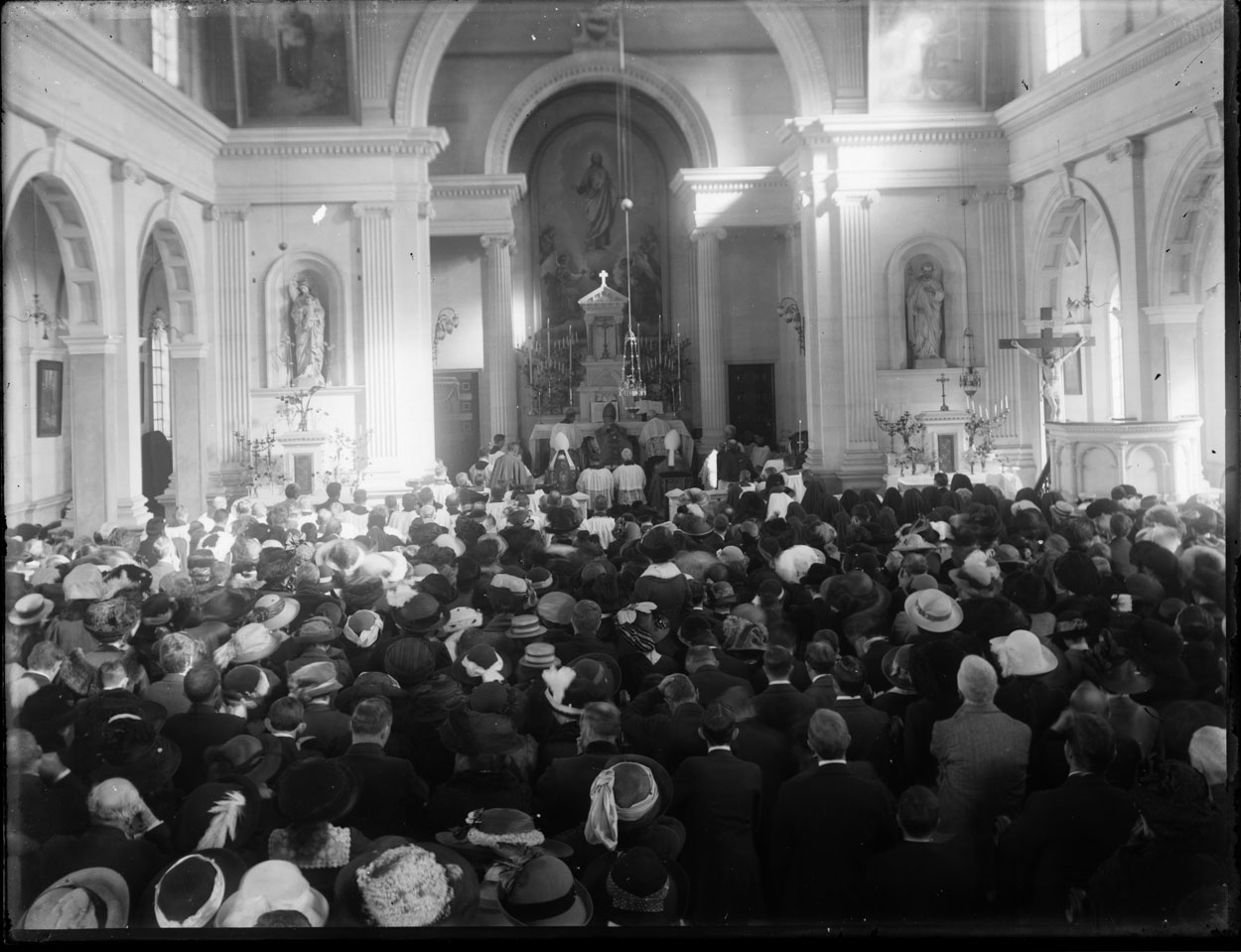
A 1913 consecration mass at the Sacred Heart Catholic Cathedral, Wellington. The three main Christian churches – Anglican, Presbyterian and Roman Catholic – nominally represented 80% of all New Zealanders during the First World War. Image courtesy of Auckland Libraries: 1032-9672.
Sexual Immorality
Sexual immorality was another area identified for reform. Reports that women were engaged to multiple men and collecting portions of their pay were condemned as acts akin to treason, as was extra-marital sex by wives while their husbands were absent overseas. Soldiers visiting prostitutes, both in New Zealand and overseas, exposed them, their wives and potential children to venereal disease. Such acts were portrayed as attacks on Christianity, contrary to God’s law. Clergy and laity were urged to uphold standards, mentor young men and women and help the penitent back to righteousness. In 1918 the Government introduced female patrols aimed at combatting immorality in the main centres. These met with limited success and were discontinued after a few years.
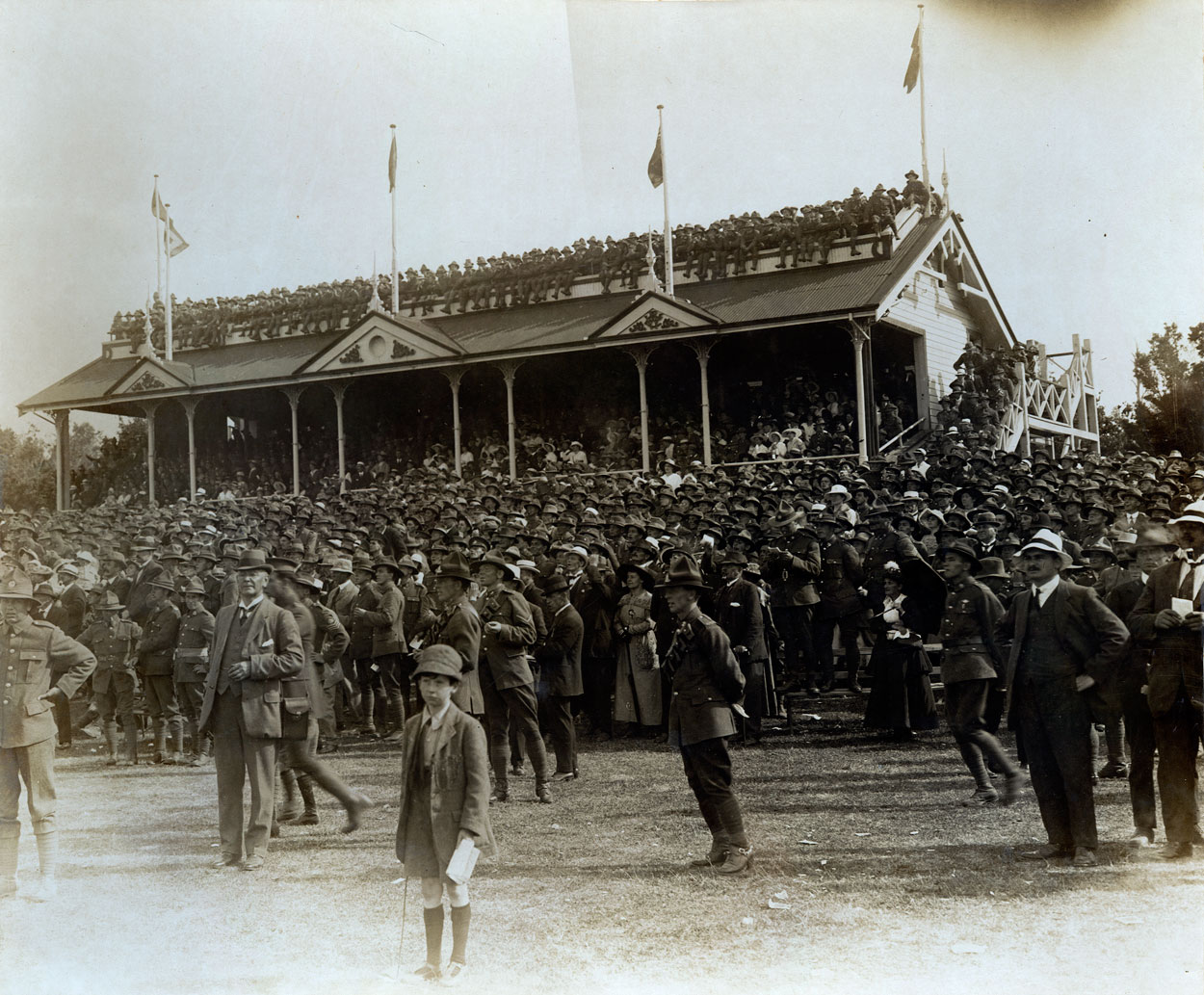
A race crowd including soldiers in front of Tauherenikau Grandstand, 13 Dec 1917. Image courtesy of Wairarapa Archive, Ref: 13-83/1-26.
Gambling
Gambling, especially horse racing, was a frequent target. Many argued that the large sums gambled on racing could be better spent on supporting the war effort, as could the time spent at the race track. Morally it was argued that people at home should not be enjoying themselves while soldiers were fighting and dying for them on the battlefields. Self-sacrifice, be it through enlisting, volunteering or donating one’s wealth to patriotic purposes, was a means to repentance and rejecting evil. Similar arguments were used against art unions, lotteries and carnivals. The churches had less support when attacking these forms of gambling than racing. Correspondence columns in the daily newspapers were more evenly divided when discussing the many Queen Carnivals or lotteries. At issue was whether funds raised in an immoral way (gambling) could be used for moral ends (the war effort). Many people would have preferred funds to have been raised through donations, and thought it a telling comment on society that it took “the gambling spirit” to convince men and women to part with their money for a cause widely believed to be patriotic, moral and holy.
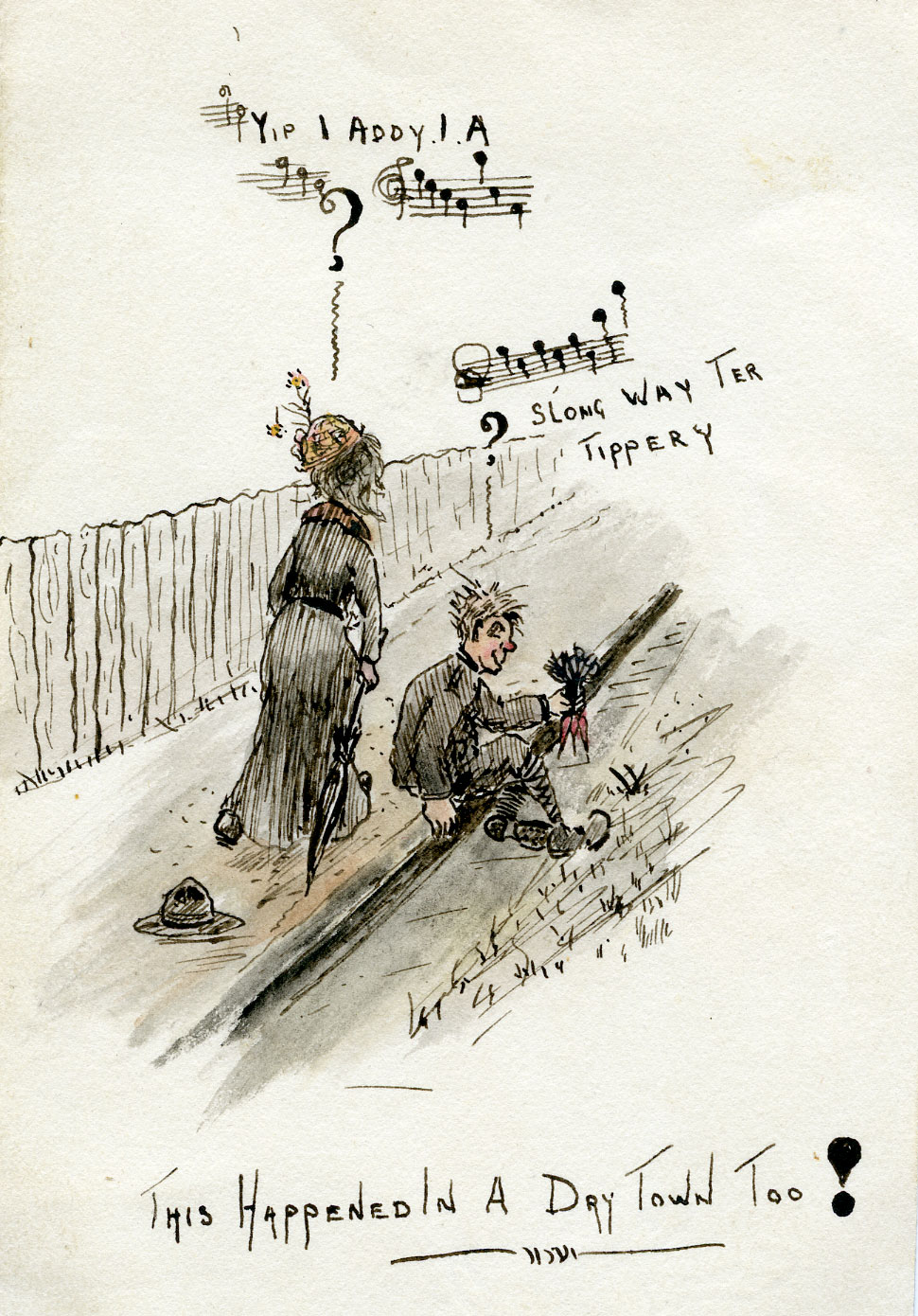
A sketch showing a soldier sitting in a Masterton gutter, singing in a drunkenly slurred manner, with a passing woman also singing. The sale of alsohol in Masterton was prohibited during the First World War. Image courtesy of Wairarapa Archive, Ref: 13-83/1-26.
Temperance and Prohibition
Temperance and Prohibition had been “hot button” topics in the years before the war. Broadly, the Catholic and Anglican churches opposed outright prohibition while the Presbyterian, Methodist and smaller Protestant churches were in favour. The war saw the debate take on a renewed emphasis. Economic arguments in favour of Prohibition centred on the funds used to purchase “drink” being better spent on prosecuting the war, the physical effect “drink” had on men training to be soldiers, and the productivity lost by workers due alcoholic excess. Morality was also key to the increased calls for prohibition. “Drink” caused moral degradation, squalor, crime and disease, disproportionately affecting women and children. Many believed that a drunkard could not be a good Christian. The importance attributed by Presbyterianism to prohibition can be seen in the fact that one quarter of its newspaper’s wartime editorials referred to it. Catholicism and Anglicanism took a more nuanced view, with the Anglican church backing six o’clock closing, but only for the duration of the war, and the Catholic church calling for increased social support.
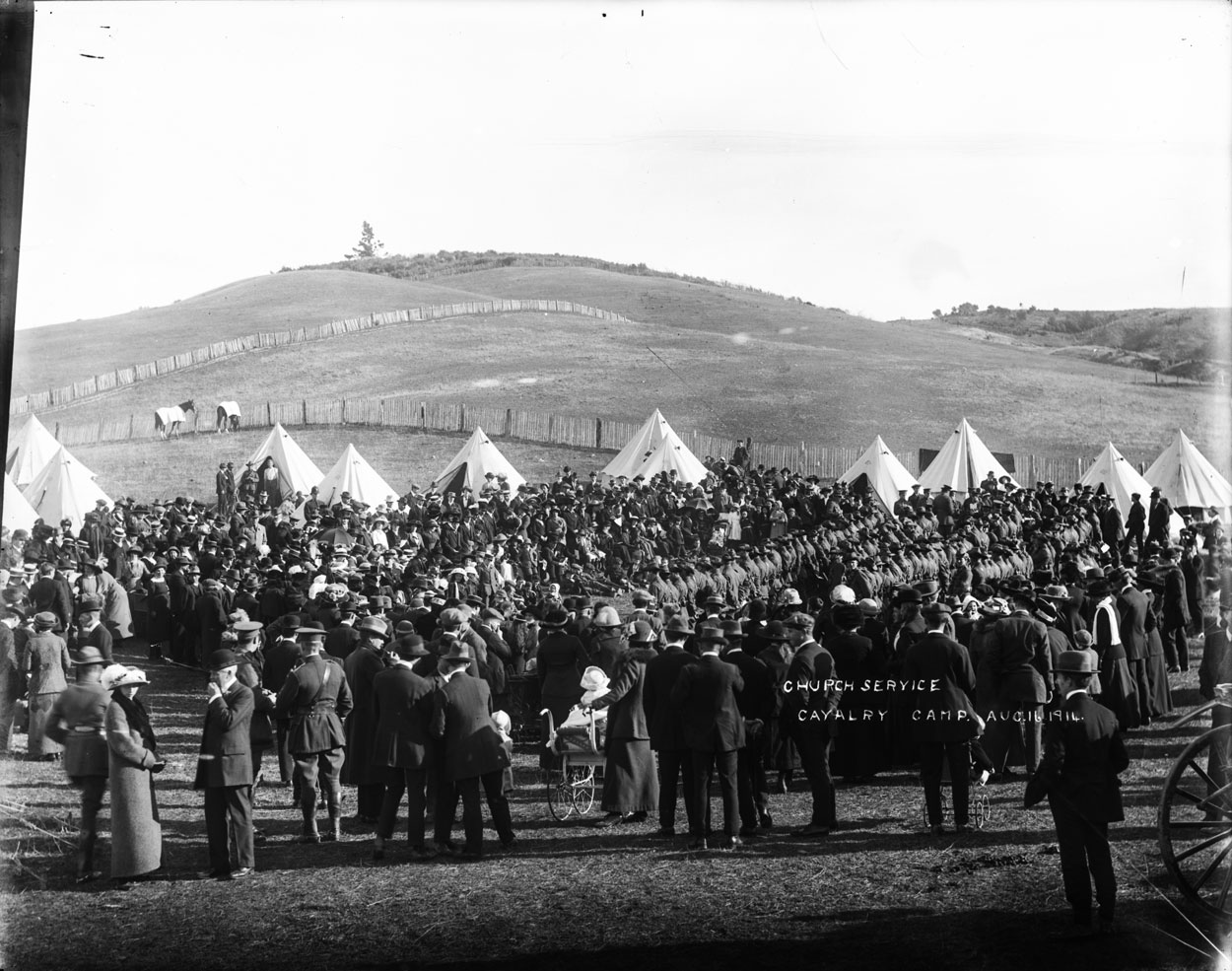
Church Service at Cavalry Camp on 16 August 1914. Image courtesy of Nelson Provincial Museum, Tyree Studio Collection: 181502.
Prayer
Along with self-denial and rejection of the immoral was prayer and intercession. Intercessory services, where God was petitioned for victory, were promoted from the very start of the war. They were seen as helping to build faith and trust in God and His direct interaction with the world. It was widely believed by many church leaders and members that prayer for victory would hasten the successful conclusion of the war. Intercessions for victory were incorporated into the daily, weekly and monthly cycle of most church’s regular services. Special services were also held periodically, be they those ordered by the King, the Government or the denomination. Attendance at the regular intercessory services tended to be poor, but the special services were usually very popular. For example, in April 1918 over 7,000 people (more than 10% of Dunedin’s population) attended a united day of prayer service at Dunedin’s Presbyterian First Church.
The efforts made by New Zealand’s churches in line with societal reformation were substantial and far-reaching, often long out-lasting the wartime crisis they were brought in to counter – 6 o’clock closing did not cease until the 1960s! They affected hundreds of thousands of New Zealanders, were integral to the country’s First World War story, yet have often been overlooked.